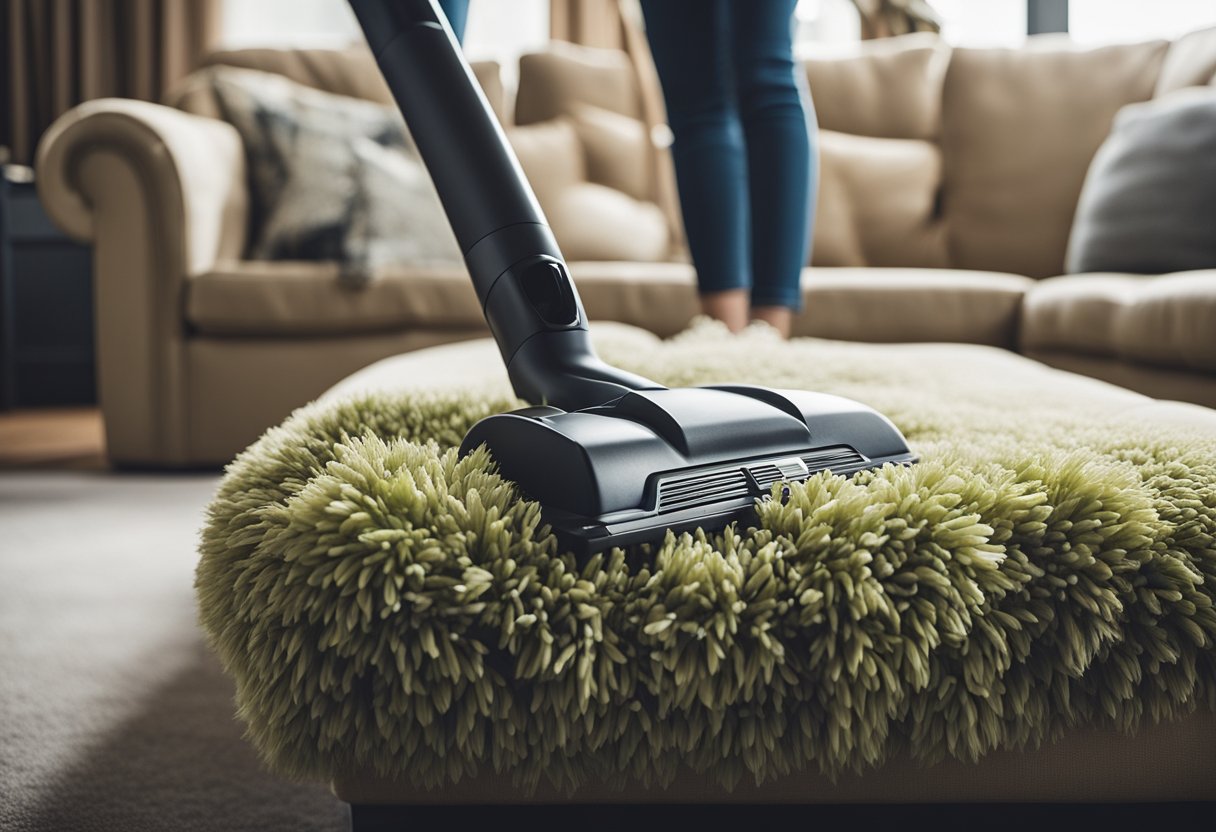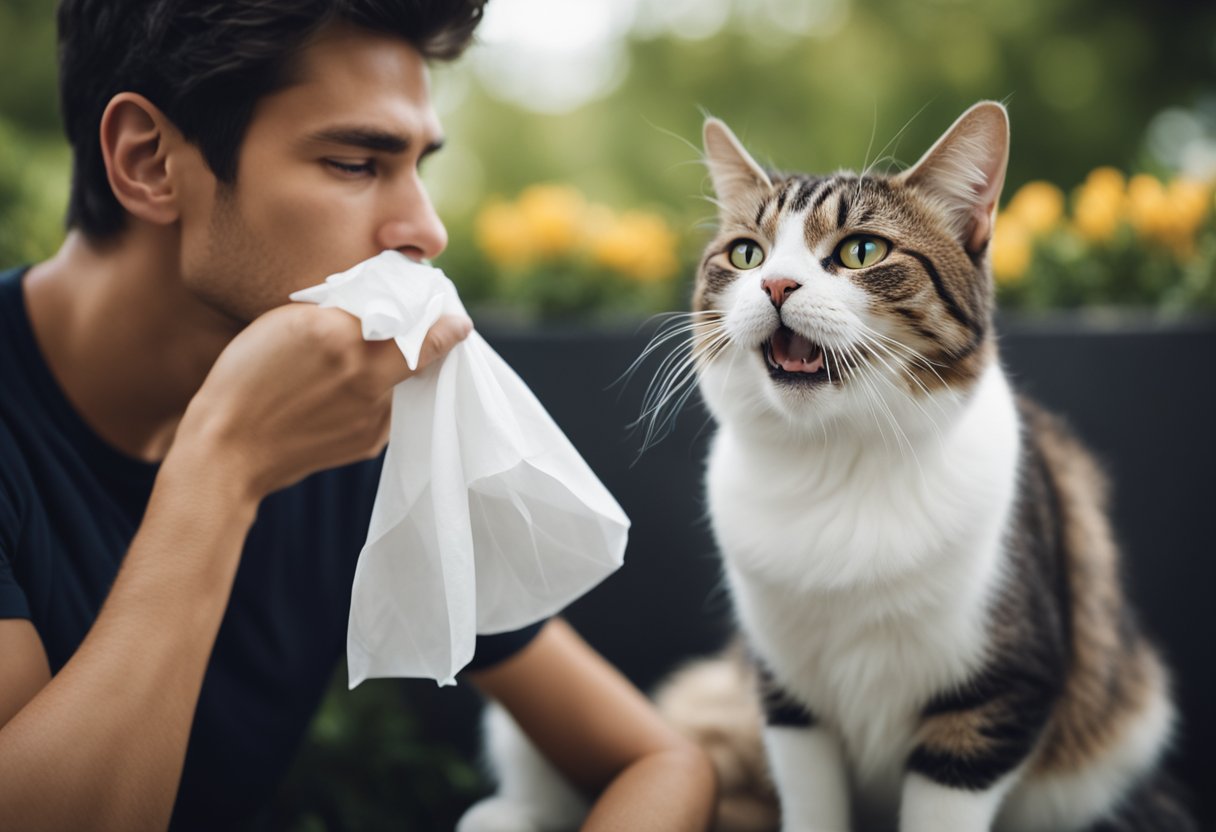Is Your Pet Giving You Allergies? Tips to Identify and Manage Pet Allergies
If you’re a pet owner, you may have noticed that sometimes you experience symptoms like sneezing, runny nose, or itchy eyes when you’re around your furry friend. These symptoms could be a sign that you have pet allergies. Pet allergies are common among people who have pets, and they can be caused by a variety of factors.

Identifying Pet Allergies can be challenging because the symptoms can be similar to other allergies, such as pollen or dust allergies. However, there are some specific symptoms you should look out for, such as sneezing, runny nose, itchy eyes, and skin rashes. If you notice these symptoms when you’re around your pet, it’s possible that you have a pet allergy. It’s essential to identify the cause of your allergies so that you can take steps to manage and treat them effectively.
Managing and Treating Pet Allergies can be done in many ways, such as avoiding contact with pets, using air purifiers, and taking allergy medications. It’s crucial to work with your doctor to find the best treatment plan for you. With the right treatment, you can still enjoy the company of your furry friend without experiencing allergic reactions.
Key Takeaways
- Pet allergies are common among people who have pets and can cause symptoms like sneezing, runny nose, and itchy eyes.
- Identifying Pet Allergies can be challenging, but specific symptoms such as sneezing, runny nose, itchy eyes, and skin rashes can help.
- Managing and Treating Pet Allergies can be done in many ways, such as avoiding contact with pets, using air purifiers, and taking allergy medications.
Identifying Pet Allergies

If you are experiencing symptoms such as sneezing, itchy eyes, and a runny nose, your pet may be the culprit. Here’s how to identify pet allergies and what you can do about it.
Common Allergens from Pets
Pets can produce a variety of allergens, including dander, saliva, and urine. Dander is made up of tiny flakes of skin that pets shed, and it is the most common allergen from pets. Saliva and urine can also cause allergies, but they are less common.
Symptoms of Pet Allergies
Symptoms of pet allergies can vary from person to person, but they often include:
- Sneezing
- Runny or stuffy nose
- Itchy or watery eyes
- Skin rash or hives
- Difficulty breathing or asthma-like symptoms
If you notice these symptoms after being around your pet, it is likely that you have a pet allergy.
Diagnosis of Pet Allergies
If you suspect that you have a pet allergy, it is important to see a doctor or an allergist for a proper diagnosis. They may perform a skin or blood test to determine whether you are allergic to your pet.
Once you have been diagnosed with a pet allergy, there are several steps you can take to manage your symptoms. These may include:
- Avoiding contact with your pet as much as possible
- Using air purifiers or HEPA filters to remove pet allergens from the air
- Washing your hands and clothes after being around your pet
- Taking allergy medication, such as antihistamines or nasal sprays
By following these steps, you can reduce your exposure to pet allergens and manage your symptoms effectively.
Managing and Treating Pet Allergies

If you are experiencing pet allergies, there are several ways to manage and treat your symptoms. Below are some strategies you can use to reduce your exposure to pet allergens, medical treatments you can use to alleviate symptoms, and alternative remedies to consider.
Reducing Exposure to Pet Allergens
Reducing your exposure to pet allergens is the first step in managing pet allergies. Here are some ways to do that:
- Keep pets out of certain areas of your home, such as bedrooms or other areas where you spend a lot of time.
- Use high-efficiency particulate air (HEPA) filters in your home to trap pet allergens.
- Wash your hands after petting animals, and avoid touching your face or eyes.
- Bathe your pets regularly to reduce the amount of dander they shed.
- Vacuum your home frequently, using a vacuum cleaner with a HEPA filter.
- Use allergen-proof covers on your mattress, box spring, and pillows.
Medical Treatments
If reducing your exposure to pet allergens is not enough to alleviate your symptoms, there are several medical treatments you can consider. Here are some options:
- Over-the-counter antihistamines can help relieve symptoms such as sneezing, itching, and runny nose.
- Nasal corticosteroids can reduce inflammation in the nasal passages and relieve symptoms.
- Decongestants can help relieve nasal congestion.
- Allergy shots, also known as immunotherapy, can help your body build up a tolerance to pet allergens over time.
Alternative Remedies
Some people prefer to use alternative remedies to manage their pet allergies. Here are some options:
- Herbal remedies such as butterbur and stinging nettle may help relieve symptoms.
- Probiotics may help reduce inflammation and boost the immune system.
- Acupuncture may help reduce allergy symptoms by stimulating the body’s natural healing processes.
Remember, if you are experiencing pet allergies, it is important to talk to your doctor to determine the best course of treatment for you. With the right management and treatment, you can still enjoy the company of your furry friends without suffering from allergy symptoms.
Resources

If you are experiencing allergies due to your pet, there are several resources available to help you manage your symptoms. Here are some helpful tips and links:
1. Visit an Allergist
If you suspect that you have pet allergies, it is important to visit an allergist for an accurate diagnosis. An allergist can perform a skin test or blood test to determine if you are allergic to your pet. They can also recommend treatment options to manage your symptoms.
2. Keep Your Home Clean
Regular cleaning can help reduce the amount of pet dander in your home. Use a HEPA filter vacuum to clean carpets and floors, and wash your pet’s bedding and toys regularly. Consider using air purifiers to help remove allergens from the air.
3. Bathe Your Pet
Bathing your pet can help reduce the amount of allergens on their skin and fur. Use a pet-friendly shampoo and follow the instructions carefully. Be sure to rinse your pet thoroughly to remove all traces of shampoo.
4. Consider Immunotherapy
Immunotherapy, also known as allergy shots, can help desensitize your immune system to pet allergens over time. This treatment involves receiving regular injections of small amounts of allergens. Talk to your allergist to see if this treatment is right for you.
For more information about managing pet allergies, check out these resources:
- American College of Allergy, Asthma, and Immunology
- Asthma and Allergy Foundation of America
- National Institute of Allergy and Infectious Diseases
Conclusion

If you are experiencing symptoms such as sneezing, itchy eyes, and a runny nose, it is possible that your pet is causing your allergies. However, it is important to consult with a healthcare professional to determine the exact cause of your symptoms.
If your pet is indeed the culprit, there are several steps you can take to reduce your exposure to pet allergens. Regular cleaning and grooming of your pet can help to reduce the amount of dander and hair in your home. Additionally, using air purifiers and vacuuming regularly can help to remove pet allergens from your home.
While it may be difficult to part with your furry friend, it is important to prioritize your health. If your allergies are severe, you may need to consider finding a new home for your pet. However, with proper management and care, it is possible to live with your pet while minimizing your allergy symptoms.
Remember, if you suspect that your pet is causing your allergies, it is important to consult with a healthcare professional to determine the best course of action for your individual situation.
Frequently Asked Questions

What are common symptoms of dog allergies in adults?
If you are allergic to dogs, you may experience symptoms such as sneezing, runny nose, nasal congestion, itchy or watery eyes, skin rash, hives, or difficulty breathing. These symptoms can occur shortly after exposure to dogs or hours later. In severe cases, dog allergies can cause an asthma attack.
How can I manage my allergies if I am allergic to my dog?
If you are allergic to your dog, there are several ways to manage your allergies. You can reduce your exposure to dog allergens by keeping your dog out of certain areas of your home, such as your bedroom, and using HEPA air filters. Regularly washing your dog and vacuuming your home can also help reduce allergens. Over-the-counter antihistamines and nasal sprays can help relieve symptoms, but it’s best to consult with a doctor before taking any medication.
What treatments are available for dog allergy sufferers?
In addition to over-the-counter medications, there are prescription medications and immunotherapy (allergy shots) available for dog allergy sufferers. Immunotherapy involves gradually exposing you to increasing amounts of dog allergens to help your body build up a tolerance to them. This can be a long-term treatment option that can reduce or eliminate your allergy symptoms.
Can pet dander trigger allergy symptoms, and how can they be recognized?
Yes, pet dander is a common trigger for allergy symptoms in people who are allergic to dogs. Pet dander is made up of tiny flakes of skin that pets shed. It can be recognized by its small size and ability to float in the air. Pet dander can be found on furniture, carpets, and clothing, as well as on pets themselves.
Is it possible to develop allergies to a pet you’ve had for years?
Yes, it is possible to develop allergies to a pet you’ve had for years. Allergies can develop at any time, even if you’ve been exposed to an allergen for a long time without any problems. If you start experiencing allergy symptoms around your pet, it’s important to see a doctor to determine the cause of your symptoms.
How long do symptoms from pet allergies typically last?
Symptoms from pet allergies can last anywhere from a few hours to several days, depending on the severity of your allergy. If you continue to be exposed to the allergen, your symptoms may persist. It’s important to take steps to manage your allergies to avoid prolonged exposure to allergens.
